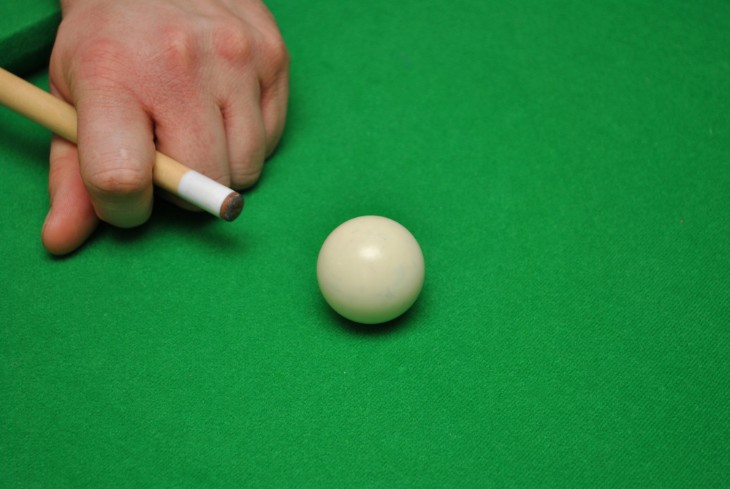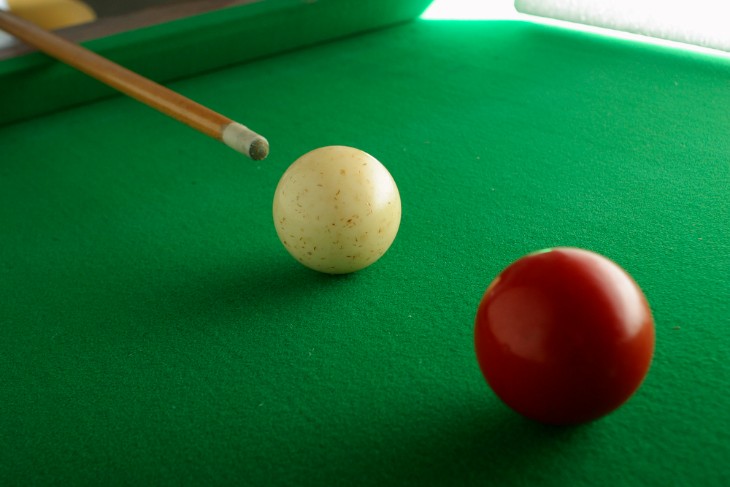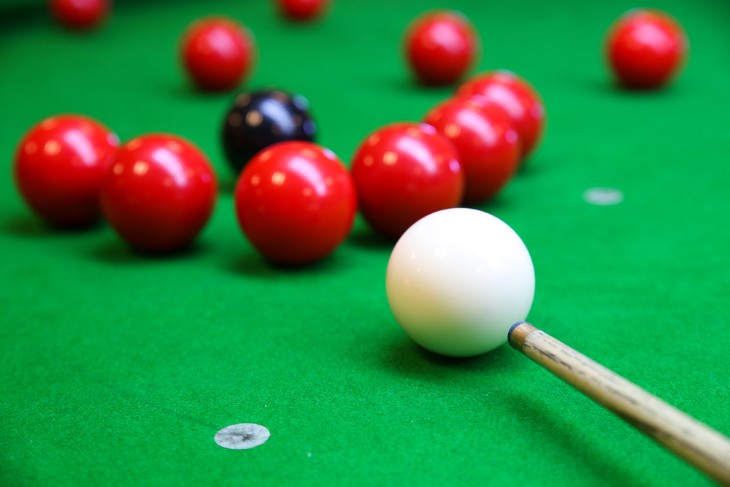Every snooker player knows the importance of a good cue tip. It's where your cue meets the ball, and it shapes how you play. But, with regular use, your cue tip can lose its shape and affect your game.
That’s where sandpaper comes in.
The process of shaping a cue tip is about getting the right curve. This curve should match the ball's surface. If the tip is too flat or too uneven, it won't work well. That's why shaping it correctly is so important. It's not just about how the tip looks. It's about how it makes the cue work.
In this article, we'll guide you through shaping your snooker cue tip with sandpaper, from the foundation to the professional tidbits, so make sure to stick around till the end!
Understanding the Importance of a Well-Shaped Snooker Cue Tip
The Role of the Cue Tip in Snooker
The cue tip is a small but crucial part of your snooker cue. It plays a big role in how you play the game. Let's look at why the cue tip is so important in snooker.
Firstly, the cue tip is the only part of the cue that touches the ball. This means it has a big impact on your shots. A good tip allows you to control the ball better. It helps you put spin on the ball or hit it straight. Without a well-shaped tip, doing these things becomes much harder.
A well-maintained cue tip also helps with accuracy. It provides a consistent surface for the ball to contact. This consistency is key for making precise shots. If the tip is uneven or worn out, your shots can be unpredictable.
The cue tip also affects how the chalk sticks to the cue. Chalk is important for preventing slips between the cue and the ball. A properly shaped tip holds the chalk better. This means less chance of miscues, where the cue slips off the ball.
Finally, the shape of the cue tip can change how the cue feels in your hand. It can affect the weight and balance of the cue. This in turn can change how comfortable the cue is to use. A well-shaped tip makes the cue feel more natural and easier to handle.
The cue tip might seem like a small part of your snooker cue. But it has a big impact on how you play. It affects control, accuracy, chalk retention, and the feel of the cue. That's why taking care of your cue tip, including shaping it with sandpaper, is so important.
Recognising When Your Cue Tip Needs Shaping
Knowing when to shape your snooker cue tip is key to maintaining your game. Let's explore the signs that indicate it's time to reshape your cue tip.
One clear sign is a change in how the cue feels when you play. If you start missing shots you'd normally make, it could be due to the tip's shape. A tip that's lost its proper dome-like curve will affect your accuracy and control.
Another sign is the appearance of the tip. A well-shaped tip should have a slight dome, mirroring the curve of a snooker ball. If your tip looks flat or has uneven areas, it's time for reshaping. This flatness can happen from normal play and needs regular attention.
Chalk retention is also a good indicator. If your tip isn't holding chalk as well as it used to, it might need reshaping. Properly shaped tips hold chalk better, which is crucial for effective shots. If you find yourself chalking more often than usual, check your tip's shape.
Additionally, if you notice any mushrooming – where the edges of the tip flare out over the ferrule – it's time for shaping. This can affect the cue's contact with the ball and lead to less precise shots.
Recognising when your cue tip needs shaping is all about paying attention to changes in your play and the tip's condition. If you notice changes in how your cue feels, how it holds chalk, or how the tip looks, it's probably time to get out the sandpaper and give it a reshape.

Preparing to Shape Your Snooker Cue Tip
Choosing the Right Sandpaper
Selecting the right sandpaper is essential for shaping your snooker cue tip. The correct choice ensures a smooth and even finish. Let's guide you through picking the best sandpaper for the job.
Firstly, understand that sandpaper comes in different grits. The grit number indicates how coarse the sandpaper is. For shaping cue tips, you'll need two types: a coarser grit and a finer grit. The coarser grit removes more material, while the finer grit smoothens the surface.
Start with a coarser grit sandpaper, around 100 to 150 grit. This is for the initial shaping of the cue tip. It helps you get the basic dome shape. Be gentle with this grit to avoid taking off too much material.
After the initial shaping, switch to a finer grit, around 400 to 600. This finer sandpaper smoothens the cue tip and gives it a polished finish. It's important for achieving a smooth surface that holds chalk well.
The quality of sandpaper is also crucial. Choose sandpaper that's durable and doesn't wear out quickly. Good quality sandpaper gives a consistent finish and lasts longer. This makes the shaping process easier and more effective.
Choosing the right sandpaper involves selecting the right grits and quality. Start with a coarser grit for shaping and finish with a finer grit for smoothing. Good quality sandpaper will make the process easier and give you a better-finished cue tip.
Setting Up Your Workspace
Preparing your workspace correctly is important for shaping your snooker cue tip. A well-set-up space makes the task easier and safer. Let's go through how to set up your workspace effectively.
First, find a stable and flat surface to work on. This could be a workbench or a sturdy table. Stability is key to avoiding any slips or mistakes while shaping the tip. A shaky surface can lead to uneven shaping.
Good lighting is another important factor. You need to see clearly what you're doing. A well-lit area helps you notice any imperfections in the cue tip as you shape it. If your workspace isn't well-lit, consider using a desk lamp or a portable light.
Having a cue clamp or holder is helpful but not essential. If you have one, it can secure your cue in place as you work. This leaves both hands free to focus on shaping the tip. If you don't have a clamp, you can still shape the tip by holding the cue steady with one hand.
Ensure your workspace is clean and free of debris. Small particles can stick to the cue tip and get in the way as you sand it. A clean workspace helps you achieve a smoother finish on the tip.
Finally, have all your tools and materials ready before you start. This includes your sandpaper, a clean cloth, and the cue. Having everything at hand makes the process smoother and quicker.
Setting up your workspace for shaping a snooker cue tip involves finding a stable surface, ensuring good lighting, considering a cue clamp, keeping the area clean, and having all your materials ready. A well-prepared workspace leads to a better shaping experience.
The Step-by-Step Process of Shaping the Cue Tip
Initial Shaping with Coarser Grit Sandpaper
The first step in shaping your snooker cue tip is using coarser grit sandpaper. This stage is all about creating the basic shape of the tip. Let's guide you through the initial shaping process.
Start with a piece of coarser grit sandpaper, around 100-150 grit. Hold the cue in one hand and the sandpaper in the other. If you have a cue clamp, use it to hold the cue steady. This frees up both hands for working on the tip.
Begin by gently pressing the tip against the sandpaper. Use a circular motion to sand the tip. The key here is to be gentle and patient. You want to remove material slowly to avoid over-shaping the tip.
As you sand, focus on creating a rounded dome shape on the tip. This shape is important for good contact with the snooker ball. Check the shape regularly to ensure it's even. Look at the tip from different angles to spot any flat or uneven areas.
Remember, the aim at this stage is not to achieve a perfect finish. You're looking to get the basic shape right. The finer details and smoothness will come later with finer grit sandpaper.
Keep sanding evenly around the tip. Avoid spending too long on one side. Uneven sanding can lead to an off-centre tip, which affects your play.
Initial shaping with coarser grit sandpaper involves gentle, circular sanding to create a rounded dome shape. Be patient and check the shape regularly. This stage sets the foundation for further refining of the cue tip.
Refining the Shape with Finer Grit Sandpaper
After shaping the cue tip with coarser sandpaper, it's time to refine it with finer grit. This stage smoothens the tip and gives it a polished finish. Let's walk through the process of refining your cue tip's shape.
Switch to finer grit sandpaper, around 400-600 grit, for this stage. The finer grit smoothens out any roughness left by the coarser sandpaper. It's crucial for achieving a smooth, even dome on the cue tip.
Continue using the circular motion as you did with the coarser grit. Gently rub the tip against the sandpaper. The aim here is to refine the dome shape and make it smooth. A smooth tip ensures better contact with the ball and improves chalk retention.
As you sand, frequently check the tip's shape and smoothness. Look at it from different angles to ensure the dome is even and symmetrical. If you find any rough or uneven areas, focus on them gently with the sandpaper.
Be patient during this process. Rushing can lead to over-sanding and ruining the shape you've worked to create. A well-refined tip should feel smooth to the touch and have a consistent curve.
Remember, the finer sandpaper won't remove much material. It's meant for fine-tuning the shape and smoothing the surface. So, focus on getting a polished finish rather than changing the shape significantly.
Refining the shape with finer grit sandpaper involves careful, gentle sanding to achieve a smooth and even dome. Regularly check the tip's shape and smoothness. This fine-tuning is key to ensuring optimal performance from your snooker cue tip.
Checking and Adjusting the Shape
Regularly checking and adjusting the shape of your cue tip is crucial in the shaping process. Let's discuss how to ensure your cue tip has the perfect shape.
As you shape the tip, stop frequently to check its form. Hold the cue at eye level and look down the shaft towards the tip. This perspective lets you see if the dome shape is even and symmetrical. You're aiming for a consistent curve without any flat spots or dips.
If you notice any uneven areas, use your sandpaper to gently correct them. Focus on the higher spots, sanding them down to match the rest of the tip's dome. Remember, it's better to make small adjustments and check often. This prevents over-sanding and helps maintain the correct shape.
Feeling the tip's surface can also help. After sanding, run your finger gently over the tip. You should feel a smooth, even curve. Any roughness or bumps indicate areas that need more attention.
Don't rush this stage of the process. Taking the time to check and adjust ensures your cue tip is shaped correctly. A well-shaped tip is key for effective play. It ensures better contact with the ball and improves your control over the shots.
Checking and adjusting the shape of your cue tip is an ongoing part of the shaping process. Regularly inspect the tip from different angles and feel for smoothness. Making small adjustments as needed helps achieve the perfect dome shape for your snooker cue tip.

Finishing Touches and Maintenance Tips
Final Smoothing and Cleaning
Once you have the cue tip shaped to your satisfaction, the final steps are smoothing and cleaning. These are important for ensuring your cue tip is ready for play. Let's go through these final touches.
After shaping and refining the cue tip, give it one last smooth with the finer grit sandpaper. This final smoothing is about perfecting the surface. You want to achieve a polished look and feel. Gently rotate the cue tip against the sandpaper in a circular motion. Be light-handed to avoid altering the shape you've achieved.
Once you're happy with the smoothness, it's time to clean the tip. Sanding produces fine dust that can cling to the tip and the cue. Use a clean, dry cloth to wipe away any dust from the tip and the surrounding area. Make sure the tip is completely clean. Any remaining dust can affect how the chalk adheres to the tip.
This cleaning step is not just about aesthetics. A clean cue tip ensures better performance. It allows for even application of chalk, which is crucial for a good grip on the ball during play.
The final smoothing and cleaning are crucial finishing steps in shaping your snooker cue tip. They ensure the tip is smooth, polished, and free from any sanding residue. These steps are key to preparing your cue tip for optimal performance in your next game.
Tips for Maintaining Your Cue Tip
Maintaining your snooker cue tip is essential for consistent performance. Proper care extends its life and keeps your game sharp. Here are some tips to help you maintain your cue tip.
Regularly check the shape of your cue tip. Over time, playing can flatten it. A quick check after each game session can help you spot when it needs reshaping. Keeping it in the right shape ensures better contact with the ball and consistent play.
Chalk your tip before every shot. Chalking prevents miscues and improves grip on the ball. Apply the chalk evenly but don’t overdo it. Too much chalk can build up and affect the tip's performance.
Avoid hard shots that can damage the tip. Excessive force can compress or misshape the tip, reducing its effectiveness. Play shots with control to maintain the integrity of the tip.
Keep the tip clean. Dirt and oils from your hands can affect how the tip holds chalk. Wipe the tip with a dry cloth occasionally to keep it clean.
Store your cue properly. When not in use, store your cue in a case or a horizontal rack. This prevents warping or bending, which can affect the tip's shape and your cue's overall performance.
Rotate the cue periodically. This ensures even wear on the tip, especially if you tend to hit the ball in the same spot. Rotating the cue helps maintain an even shape for longer.
By following these maintenance tips, you can keep your snooker cue tip in top condition. Regular care and attention will help you deliver your best performance on the snooker table.
Summing It Up
The process of shaping your cue tip with sandpaper, as we've discussed, is more than just routine maintenance. It's about fine-tuning your main tool in the game. A cue tip with the right shape and smoothness interacts with the ball more effectively, allowing for more precise shots.
Shaping and maintaining your snooker cue tip is a crucial aspect of the game. It's not just about upkeep; it's about giving yourself the best chance to play well. A well-shaped cue tip, achieved through careful sanding and regular maintenance, can be a game-changer, enhancing your overall snooker experience.
For more information:




.webp)


 (1).webp)




















